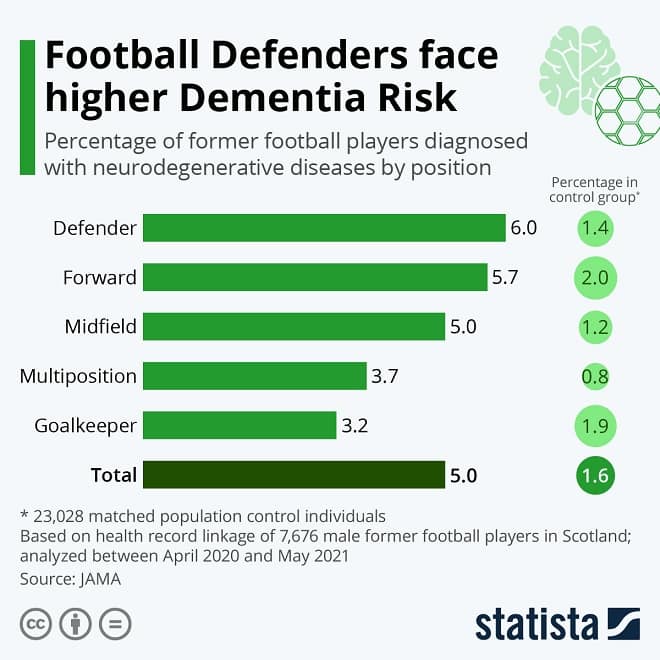Source: Statista
A well-executed header might excite fans, but it could prove detrimental to the corresponding player’s health in the long run. As a study by the University of Glasgow shows, 5 percent of former football players were diagnosed with neurodegenerative diseases like dementia, motor neuron or Parkinson disease. While this number doesn’t sound too high on its own, it becomes more striking when compared to the rest of the population as our chart indicates.
The control group of 23,028 males matching the criteria of sex, year of birth, and area socioeconomic status only showed 1.6 percent having contracted the aforementioned diseases. While goalkeepers were comparatively safe with 3.2 percent, especially when contrasted with their control group counterparts, defenders ran the highest risks of falling ill with dementia or similar diseases at 6 percent. Professor Willie Stewart, who led the research, is now arguing for safety labels being added to footballs and questioning the technique in general: “Is heading absolutely necessary for football to continue? Is exposure to risk of dementia absolutely required for the game of football?”
Chronic traumatic encephalopathy or CTE, which is contracted through repetitive head trauma and may be linked to development of dementia, has been the source for many discussions over the last couple of years. Up until now, research focused on more obvious sports like American football or boxing. Now that one of the most popular and widespread sports worldwide is starting to become part of this conversation, attitudes toward protecting players could change in the foreseeable future.

